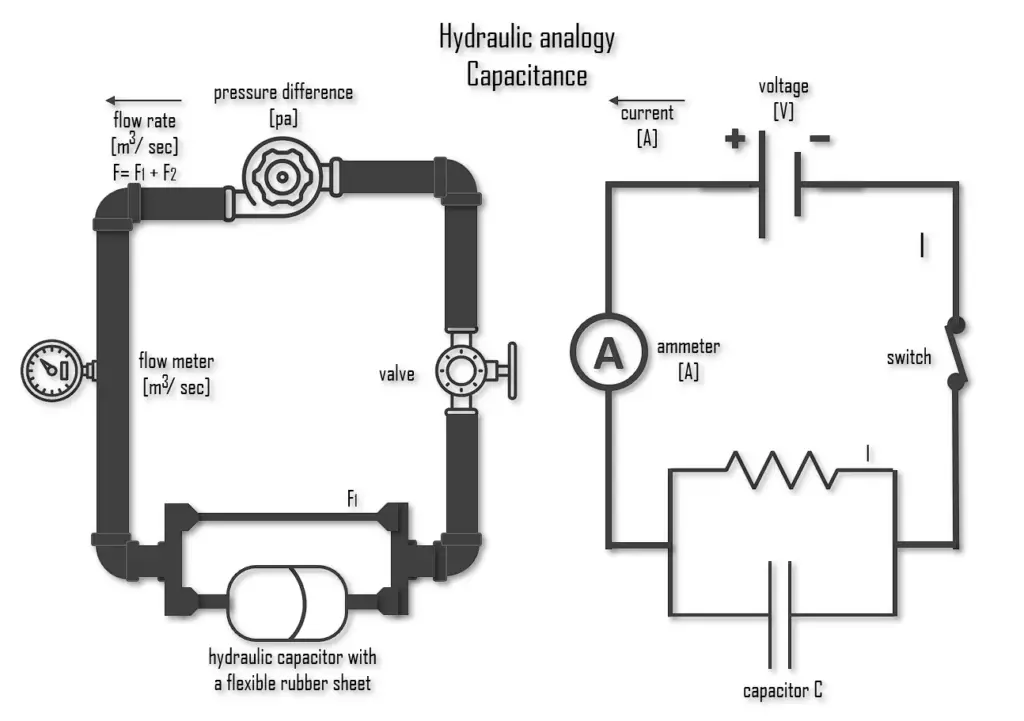30-second summary
Hydraulic Analogy of Capacitance
In a hydraulic analogy, capacitors are equivalent to a tank with one connection at each end and a membrane dividing the tank in two lengthwise (a hydraulic accumulator).
Capacitance is defined as the ability to store an electric charge and is symbolized by the capital letter C. Any two conductors separated by an insulator (or a vacuum) form a capacitor.
The amount of charge stored in a capacitor is equal to its capacitance multiplied by the voltage across the capacitor:
q = CV
The proportionality constant C is called the capacitance of the capacitor.
See also: Capacitors
See also: Dielectrics

Capacitance
Capacitance is defined as the ability to store an electric charge and is symbolized by the capital letter C. Any two conductors separated by an insulator (or a vacuum) form a capacitor. Commonly recognized are two closely related notions of capacitance: self-capacitance and mutual capacitance.
The amount of charge stored in a capacitor is equal to its capacitance multiplied by the voltage across the capacitor:
q = CV
The proportionality constant C is called the capacitance of the capacitor. Its value depends only on the geometry of the plates and not on their charge or potential difference. The capacitance is a measure of how much charge must be put on the plates to produce a certain potential difference between them: The greater the capacitance, the more charge is required.
Capacitance (C), measured in farads, is equal to the amount of charge (q) that can be stored in a device or capacitor divided by the voltage (V) applied across the device or capacitor plates when the charge is stored.
C = q/V
Capacitance in Hydraulic Analogy
In a hydraulic analogy, capacitors are equivalent to a tank with one connection at each end and a membrane dividing the tank in two lengthwise (a hydraulic accumulator). As the pump in the system begins pushing water, the membrane will stretch in response to the pressure from said water. The significance of the stretching is comparable to the amount of charge deposited on a capacitor. It should be fairly easy to see from this description that this membrane’s stretching represents the voltage drop in an electrical circuit, and the discharge of a capacitor is likewise comparable to the membrane returning to its original extent.


